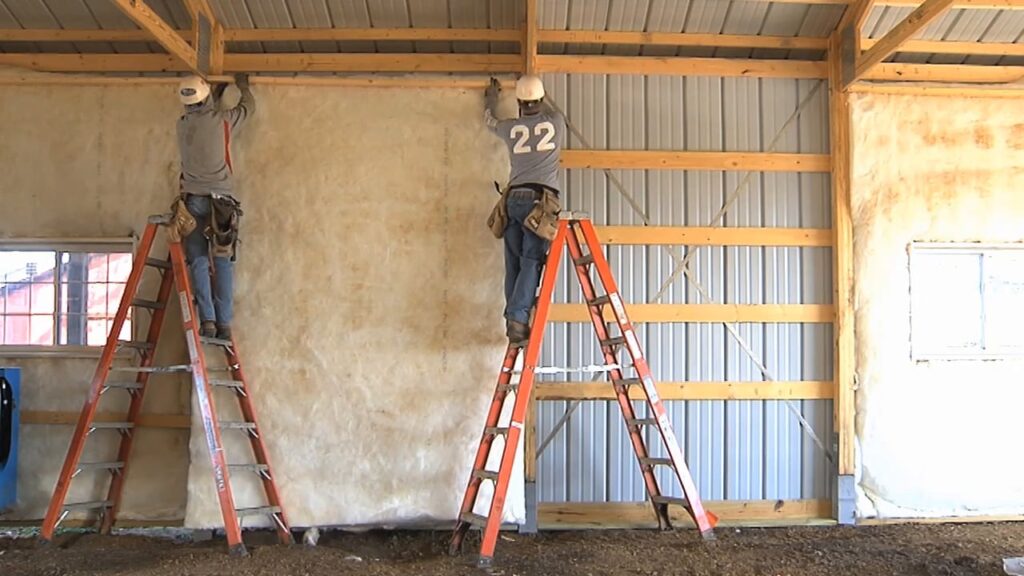
The less obstruction you have in a wall cavity, the better your insulation will work. Understand that well-insulated walls = well-engineered walls The following considerations can help your pole-barn’s insulation capabilities and overall performance. With a poorly designed building, you’ll always be fighting a losing battle, no matter what type of insulation you use. That’s why the best time to address insulation is in the design phase, before construction begins.Ī properly designed wall system – and overall pole barn structure – could improve your building’s ability to withstand cold and heat by 17%, and possibly more. The key to insulating your pole barn effectively is to start with the right building design. Start planning for insulation in the design phase

Alternatively, you may want to use a condensation control measure like a DripStop membrane (discussed more below).ģ. In this case, we might advise you to place insulation under the steel of the roof to reduce condensation during summer or reduce radiant heat when the sun is shining. You may not need much, if any, wall insulation because the animals themselves, especially horses, generate a lot of heat. Answering questions like those above is crucial because what goes in – and what goes on inside – your pole barn should determine your insulation decisions.įor example, let’s say you plan to use your pole barn for animal confinement. Insulation isn’t a one-size-fits-all construction step. Be clear on how you plan to use your pole barnĭo you want a pole barn garage where you’ll likely be working for only a couple of hours at a time – and in mild weather? Will it be a “man cave” (or “she shed”) where you might spend all day? Are you insulating your attic? What kinds of equipment and materials do you plan to store? Promote a healthier environmentĬontrolling the heat and cold, and even the noise, with effective insulation practices helps create an overall healthier dwelling space for both people and animals.Ģ. These things can not only damage the building itself but also the vehicles, equipment, and anything else you store inside it. Uncontrolled air flow causes excess moisture and condensation, which can lead to rust, mold, and mildew.

Generally, the higher the composite R-value of your walls and ceiling, the better. Boosting the R-value – a measure of your insulation’s ability to resist heat traveling through it – can result in significant savings.

Heating and cooling a pole barn can be a significant financial investment. That means it will also help: Generate lower energy costs Insulation will help maintain a consistent temperature in your pole barn building. Understand just how critical insulation is for you and your pole barn


 0 kommentar(er)
0 kommentar(er)
